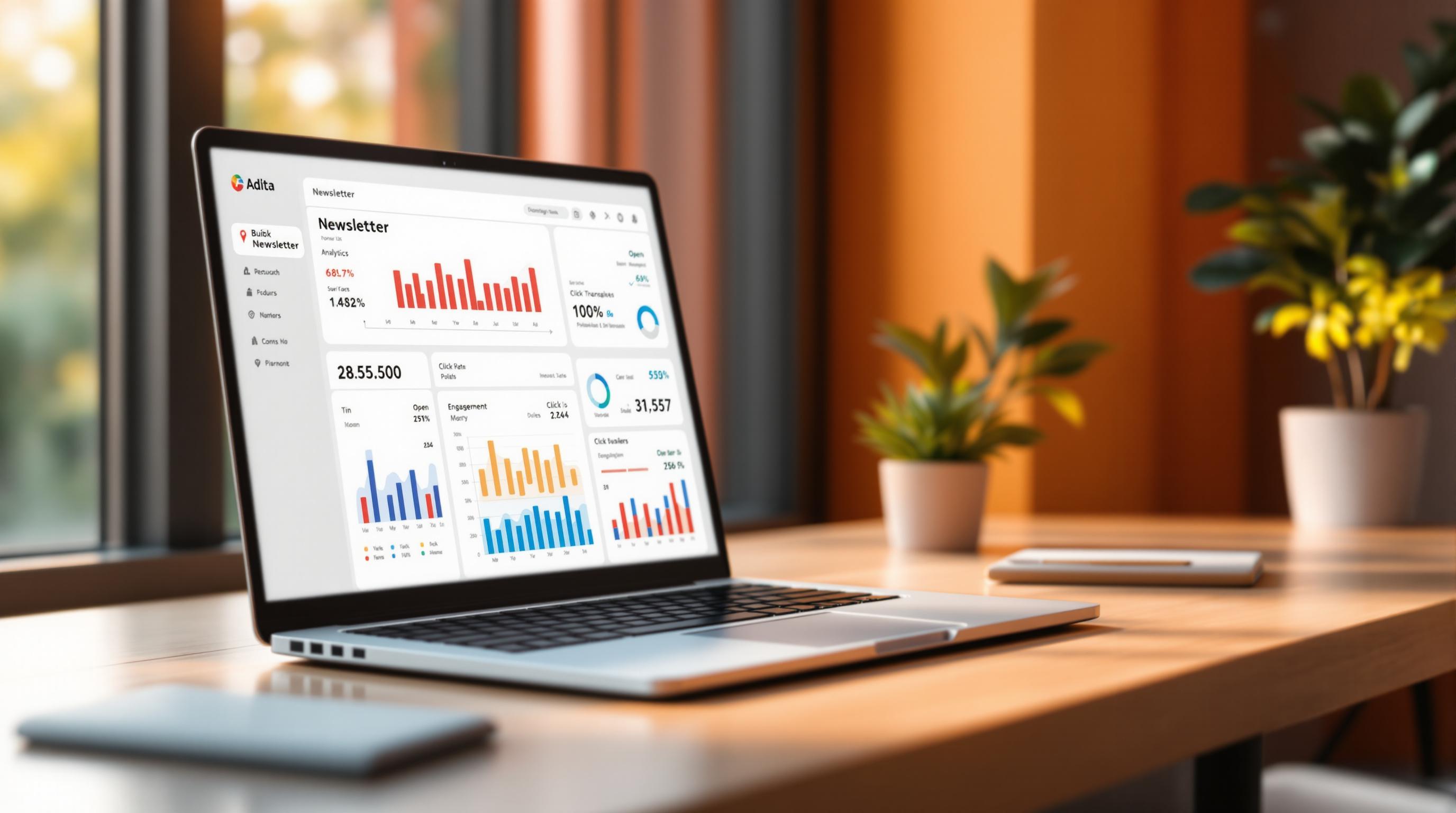Which model is better for your business goals: trial subscriptions or freemium?
Here’s the quick answer:
- Trial subscriptions give users full access to all features for a limited time (e.g., 7–30 days) and are better for driving quick conversions. They typically convert 10–25% of users into paying customers.
- Freemium models offer a basic, free version indefinitely but with feature limits. They attract a larger user base but have lower conversion rates (around 5%).
Both models have strengths and weaknesses. Trial subscriptions are ideal for products with complex features that users need to experience fully upfront. Freemium models work better for simpler, mass-market products that thrive on large user bases.
Quick Comparison
| Criteria | Trial Subscriptions | Freemium Models |
|---|---|---|
| Access | Full features for a limited time | Basic features, free forever |
| Conversion Rate | 10–25% | ~5% |
| User Base Size | Smaller, high-intent users | Larger, casual users |
| Revenue Focus | Immediate | Long-term |
| Best For | Complex tools, B2B platforms | Simple tools, mass-market apps |
Bottom Line:
If your goal is fast revenue and qualified leads, go with trial subscriptions. If you’re focused on building a large audience for long-term growth, freemium is the way to go.
Freemium vs. Free Trial for Product-Led Growth: How to Choose
How Trial Subscriptions and Freemium Models Work
Grasping the workings of trial subscriptions and freemium models is key to deciding which option fits your newsletter platform. These approaches shape how you grow revenue and engage users.
Trial Subscription Mechanics
Trial subscriptions offer users full access to a product for a set time, usually between two and four weeks. During this period, users can explore all features without restrictions. However, once the trial ends, access is cut off unless they switch to a paid plan.
A common feature of trial subscriptions is the requirement for payment details upfront. For instance, some services ask for payment info before starting a 14-day trial, while others provide a 30-day trial without needing any billing information.
Freemium Model Mechanics
Freemium models operate differently. They provide basic features for free, with premium features available for a fee. Unlike trials, the free version is available indefinitely, allowing users to engage with the platform over the long term.
The idea is to attract a large base of free users and convert a segment of them into paying customers. Striking the right balance in the free tier is critical - it must offer enough value to draw users in while encouraging upgrades for more advanced needs.
Take Dropbox, for example. It gives users 2 GB of free storage but nudges them to upgrade when they need additional space or advanced options. Similarly, Grammarly provides free basic grammar checks but charges for advanced writing tools.
Freemium models also excel at showcasing value over time. Spotify, for instance, lets users stream from a massive library of over 100 million songs for free, but with limits like ads and restricted skips. Premium plans remove these barriers, and by 2022, Spotify had over 626 million active users, with 246 million paying for Premium.
These differences in how the models function naturally lead to varied patterns in user engagement and conversion rates.
Common Use Cases for Each Model
The choice between trial subscriptions and freemium models often depends on the type of product and target audience. For newsletter platforms, these distinctions can significantly impact user experience and revenue.
Trial subscriptions are ideal for complex tools where users need time to assess the full value. Platforms with features like advanced analytics, automation, or enterprise-level tools benefit from this model. The trial period gives users the chance to test campaigns, review data, and understand the platform’s capabilities. This approach works particularly well for B2B platforms targeting businesses that need to evaluate ROI before committing.
Freemium models, on the other hand, are better suited for mass-market products with straightforward value. Newsletter platforms aimed at individual creators or small businesses often thrive with this strategy. The free tier acts as an entry point, allowing users to start building their audience at no cost while offering clear upgrade options as their needs grow.
Revenue Impact Comparison
The revenue dynamics of trial subscriptions and freemium models set them apart, offering distinct paths for newsletter platforms aiming for long-term stability. Let’s break down how these approaches differ in their financial impact.
Conversion Rates and ARPU
Trial subscriptions typically deliver higher conversion rates and average revenue per user (ARPU) compared to freemium models. For instance, free trials average a 17% conversion rate, and when payment details are required upfront, this jumps by 25%. On the other hand, freemium models hover around a 5% conversion rate. Additionally, a fast time-to-value can boost trial-to-paid conversions by as much as 30%.
Some companies have refined their strategies with impressive results. HubSpot, for example, saw a 35% increase in sign-ups while maintaining paid conversion rates by making credit card information optional for trials. Calendly, leveraging its freemium setup, achieved a 62% boost in conversions without compromising user acquisition. Opt-in free trials, where users actively sign up, show an 18.2% conversion rate, while opt-out trials, which require users to cancel to avoid charges, reach a much higher rate of 48.8%.
Next, let’s explore how these models scale and what that means for growth.
User Base and Scalability
Freemium models are excellent for quickly building massive user bases, but they often come with financial trade-offs. Take Dropbox as an example: its freemium strategy attracted over 700 million registered users, yet only about 17.77 million are paying customers - a conversion rate of just 2.5%. Typically, freemium models support 20 to 50 free users for every paying subscriber. While this works well for digital products with low operating costs, it can strain platforms that have higher overhead.
Trial subscriptions, although they generate fewer sign-ups, attract users with stronger buying intent, leading to more immediate revenue. However, this approach may not achieve the viral growth often seen with freemium models.
Zoom’s performance in 2020 illustrates freemium scalability. The platform experienced a staggering 354% increase in user growth, which fueled a 326% revenue jump. This highlights both the advantages and challenges of scaling with a freemium model.
Let’s now consider how these models impact revenue predictability.
Revenue Predictability
Trial subscriptions offer clear revenue outcomes. Users either convert to paying customers at the end of their trial or they don’t, making financial forecasting much simpler and more reliable.
Freemium models, however, introduce more uncertainty. Free users can stay on the platform indefinitely without upgrading, making it harder to predict when or if they’ll convert. Although freemium conversion rates generally range from 2% to 5%, they can yield higher customer lifetime value (LTV) in certain enterprise markets - sometimes up to three times higher. However, this model concentrates financial risk, as a small percentage of paying users often generate most of the revenue. If these key users churn, the financial impact can be significant.
Real-world examples highlight these differences. MailChimp saw a 150% increase in paying customers and a 650% rise in profits after adopting a freemium strategy. Similarly, Spotify generated $7.88 billion in revenue in 2020, with about 45% of its users subscribing to premium plans.
sbb-itb-2653e19
User Engagement and Retention
Trial and freemium models create distinct user engagement patterns, which directly influence retention and loyalty.
User Behavior Patterns
Trial subscriptions encourage users to dive in quickly, exploring features intensely within a limited time frame. This "all-in" approach is driven by the urgency of a ticking clock.
"Free trials allow customers to experience the full product functionality but for a limited time. They could require user credit card details or not",
- Jana Frejova, Product Marketing Lead at Spendesk
On the other hand, freemium users take a slower, more gradual approach. With no time pressure, they explore at their own pace, often focusing on the basics before considering upgrades. As Jana Frejova notes:
"Freemium gives users free access to limited product functionality for an unlimited time. It's a good way to boost brand awareness and add value to products dependent on the network effect",
These contrasting engagement styles lay the groundwork for customized retention and upgrade strategies.
Retention and Upgrade Strategies
To effectively monetize trial and freemium users, retention strategies must align with the unique behaviors of each group.
For trial users, the goal is to deliver value quickly and create a sense of urgency. A great example is ProdPad, which rewards users with extra trial days for engaging with key product features. This approach encourages exploration while ensuring users experience the platform's core benefits.
Freemium models, however, focus on steady engagement and strategic limitations. Trello highlights premium features through in-app messages and tooltips, reminding users of what they’re missing out on. Similarly, Asana incorporates a free trial of premium features into its freemium setup, giving users a temporary taste of advanced tools before reverting to the basic plan.
The onboarding process also differs between the two models. Free trials benefit from a fast, streamlined onboarding experience that emphasizes immediate value. Freemium models, by contrast, prioritize long-term engagement and clear upgrade opportunities.
Some platforms even combine elements of both approaches. Calendly, for instance, uses a "reverse trial" strategy: new users start with premium features for a limited time, then transition to the free plan unless they choose to upgrade. This hybrid model blends the urgency of a trial with the comfort of freemium exploration.
The numbers highlight the differences in conversion potential. Trial subscriptions typically achieve conversion rates around 17%, compared to about 5% for freemium models. While trial users are more likely to convert initially, keeping non-converting trial users engaged often requires additional effort.
For newsletter platforms and other businesses, aligning these tailored engagement and retention strategies with overarching goals is key to driving long-term success.
Choosing the Right Model for Newsletter Platforms
Deciding between free trials and freemium models depends on your platform's goals and capabilities. Each approach has its strengths, and the right choice often hinges on how well it aligns with your business strategy.
Key Factors to Evaluate
Understanding your audience is crucial. Are your users the type who prefer to explore features gradually, or do they want full access upfront? Freemium models are great for casual users who may need time to see the value of premium features. On the other hand, free trials are better suited for users actively seeking comprehensive solutions.
The complexity of your platform also plays a role. If your platform offers basic tools like email sending and list management, a free trial can quickly showcase its value. However, for platforms with advanced features - such as automation, detailed analytics, or monetization tools - a freemium model gives users the time they need to fully appreciate what’s on offer.
Operational costs and resources are another consideration. Freemium models often require more robust infrastructure to support a larger base of free users, along with customer support to handle inquiries. Meanwhile, free trials typically attract a smaller, more qualified user base, reducing the strain on resources.
The effectiveness of your sales team can influence your decision too. Free trials generate qualified leads and boast a conversion rate of around 17%, but they require active follow-ups from a dedicated sales team. Freemium models, by contrast, work best when the conversion process is automated and doesn’t rely heavily on manual intervention.
Your market positioning is also important. In competitive markets, freemium models can help build brand awareness and attract a larger audience. But if your focus is on immediate revenue, free trials - thanks to their higher conversion rates - might be the better choice.
Once you’ve considered these factors, align your model with your platform’s bigger picture and strategic goals.
Matching Models to Business Goals
Each model serves different business objectives. If your goal is rapid user acquisition and brand visibility, freemium models are a strong option. They can generate up to 33% more free accounts per visitor. For example, Mailchimp’s freemium plan offers limited features and usage caps, giving users a chance to explore the platform before deciding to upgrade.
If immediate revenue is your priority, free trials are often more effective. They typically deliver conversion rates nearly double those of freemium models - about 17% versus 5% .
Freemium models also shine when it comes to long-term engagement. Take Tettra, for instance. After switching from a 15-day free trial to a freemium model in July 2018, the company saw retention rates consistently above 70%, even surpassing 100% at times throughout the year. This demonstrates how freemium strategies can nurture ongoing user relationships.
In competitive markets, freemium models can be a powerful growth tool, helping platforms secure a larger market share.
Hybrid approaches, like Canva’s, can also work well. Canva offers a free plan alongside a free trial of its premium features. This allows casual users to stick with the free version while giving more engaged users the chance to explore advanced tools before committing.
Finally, activation rates are worth considering. Freemium models typically see a median activation rate of about 20%, while free trials average around 40%. If your platform excels at onboarding, a free trial might be the better fit. But if gradual engagement suits your audience, freemium could be the way to go.
Ultimately, the choice between freemium and free trials depends on whether your newsletter platform prioritizes building a large user base for long-term monetization or converting qualified leads into paying customers quickly. Testing both models in controlled settings can help you identify the best fit for your audience and goals.
Conclusion
Deciding between free trials and freemium models comes down to your primary goal: driving immediate revenue or building long-term user growth. Free trials typically yield conversion rates of 15–25% and can generate up to 18% higher ARPU than freemium models. On the other hand, freemium models are excellent at attracting large user bases and can slash customer acquisition costs by 50–60% compared to non-freemium strategies.
As Wes Bush, Founder of ProductLed, puts it:
"The freemium model allowed users to try the product without a time limit...ultimately led to more people onboarding, finding the value, and converting."
The distinction lies in how each model showcases value. Free trials offer full-feature access for a limited time, creating urgency to convert. Freemium models, however, foster gradual engagement, giving users the time to explore and uncover value at their own pace.
Your product's complexity and your audience's behavior should guide your decision. If your platform delivers immediate, obvious value and your users prefer a comprehensive upfront experience, free trials might be the better fit. On the flip side, for feature-rich platforms with a learning curve, freemium models give users the space to organically discover value.
Dan Schoenbaum sums it up well:
"Trials prioritize immediate revenue; freemium builds market penetration."
Operational demands also vary. Freemium models need solid infrastructure to handle large numbers of free users, while free trials require a strong, proactive sales strategy. Hybrid models, like HubSpot's combination of a free CRM with premium trials, can balance market share growth with short-term revenue goals.
Ultimately, the right approach depends on your strategic priorities. Whether you're aiming for market penetration or immediate revenue, testing both models in controlled scenarios can help you determine what works best for your newsletter platform.
FAQs
How can a business decide between a trial subscription and a freemium model for their product or service?
Choosing between a trial subscription and a freemium model hinges on your product, target audience, and what you aim to achieve as a business.
The freemium model is perfect if you're looking to attract a large audience and create buzz around your brand. By offering free access to basic features, you can draw in users and encourage them to upgrade to paid plans for added benefits. Meanwhile, trial subscriptions let users experience your product's full range of features for a limited time, making it a great option if you're targeting users who are likely to pay after seeing the product's value firsthand.
Your decision should reflect your priorities - whether that's focusing on growing your user base or driving immediate revenue - and align with your broader business goals.
How can I boost conversion rates for trial subscriptions and freemium models?
To boost conversion rates for trial subscriptions and freemium models, focus on delivering a smooth and engaging user experience. Start by offering a thoughtfully curated set of features in the trial or free version - enough to showcase your product's strengths without overwhelming users. Streamline the signup process to make it as simple and hassle-free as possible.
Once users are in, personalized onboarding emails, progress trackers, and helpful resources can make a big difference in guiding them to see the value of your product. Highlight the advantages of upgrading by clearly presenting premium features and addressing common concerns like pricing or unclear benefits. Most importantly, ensure the upgrade process is straightforward and easy to follow - this can make all the difference in turning trial users into paying customers.
What are the key differences in operational costs and infrastructure needs between trial subscription models and freemium models?
Freemium models often come with higher operating expenses because they need to accommodate a large number of free users. This means investing in scalable infrastructure, ongoing customer support, and ensuring that both free and premium features work seamlessly. As the user base grows, these costs can quickly escalate.
In contrast, trial subscription models offer premium features for a limited time, which can require higher initial costs to onboard and support trial users. However, these models tend to be less expensive in the long run since only paying customers remain after the trial period ends. Additionally, the infrastructure demands are usually lower, as the trial user base is more targeted and temporary.
The decision between these two approaches ultimately hinges on your business priorities - whether you're aiming to attract a broad audience or generate revenue more quickly.


